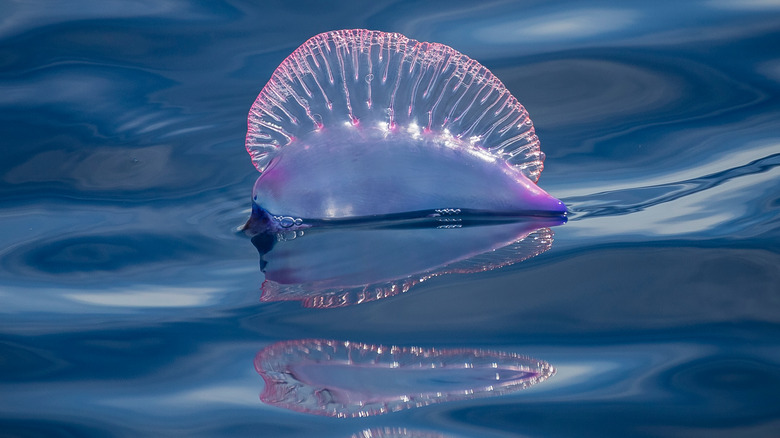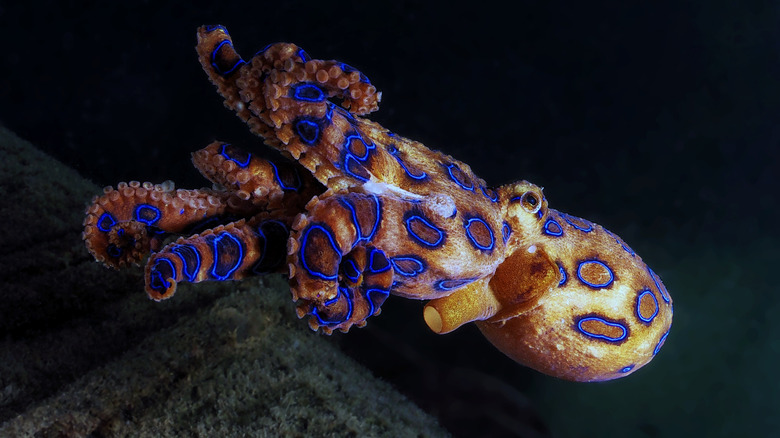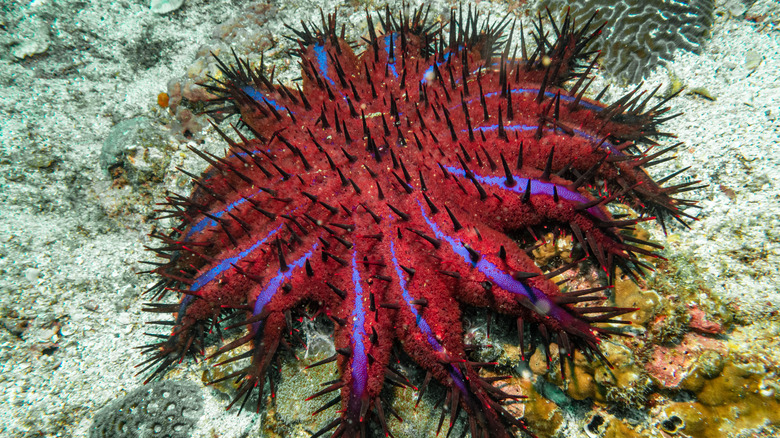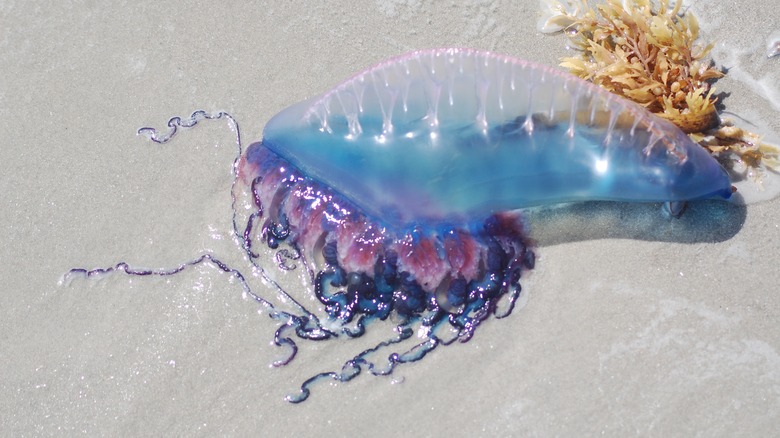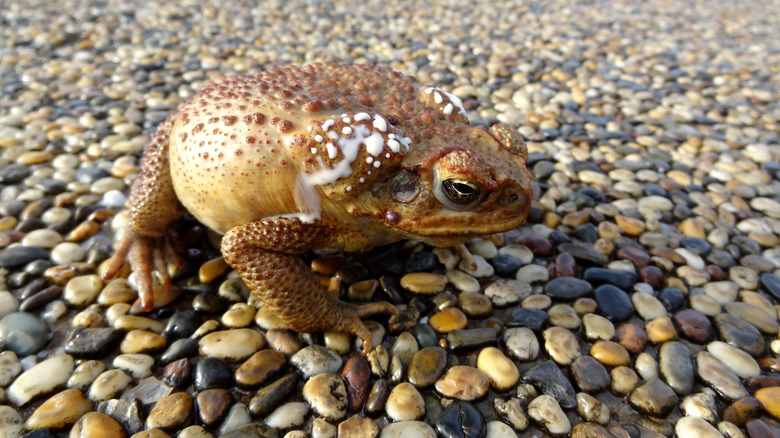The Most Dangerous Creatures You Need To Steer Clear Of In Fiji
The island nation of Fiji is a dream destination worth a visit. It has countless unspoiled islands with gorgeous views and white sand beaches, including the Yasawa Islands, Viti Levu, and more. Undoubtedly, Fiji is ideal for individuals with a sense of adventure and curiosity about the great outdoors. Typical activities in Fiji include island hopping, cruising, snorkeling, swimming, and much more. Likewise, those who need a respite can have a lowkey sojourn at luxe resorts like the Outrigger Fiji Beach Resort or the Likuliku Lagoon Resort.
However, what you need to know before your vacation to Fiji is that danger lurks in this tropical paradise. For example, mosquitoes are plentiful and can, unfortunately, spread viral infections like Dengue. Hence, packing mosquito repellent is a must for travelers. Furthermore, Fiji is also filled with an array of wildlife. This allures many visitors, especially those who want to snorkel or swim in Fiji's famed coral reefs.
Fiji's aquamarine waters have docile marine life, such as sea turtles and tropical fish. But, of course, not every animal in Fiji is harmless. While encounters with Fiji's notorious critters can be deadly, other times, it can be downright agonizing. Here are the animals you need to keep your eyes peeled for in Fiji.
Blue-ringed octopus
The blue-ringed octopus is a tiny creature that lives in Fiji and, notably, Australia. Uniquely, it features vibrant blue rings throughout its body. However, these are only present when the animal believes it is in danger. The blue-ringed octopus is so compact it can fit in the palm of a hand, and some might even describe it as cute. But if you see one, you should never touch it. The blue-ringed octopus is incredibly poisonous thanks to a toxin known as tetrodotoxin. According to a 2015 study published by the scientific journal Marine Drugs (via the National Library of Medicine), tetrodotoxin is 1,200 times more potent than cyanide.
Although victims will likely not even feel a bite from a blue-ringed octopus, what comes next is horrifying. The poison acts fast and causes paralysis. This ultimately prevents the individual from being able to breathe, leading to their death. Perhaps what's even more terrifying is that there is no antidote. Treatment primarily involves providing the victim with respiratory assistance.
Luckily, with the available technology, death from a blue-ringed octopus bite is uncommon. Be wary of tide pools or picking up shells or bottles in Fiji. This is where the blue-ringed octopus likes to make its home.
Crown Of Thorns Starfish
If you've ever visited an aquarium, you've likely had an opportunity to (safely) touch a starfish as part of the experience. But not all starfish are friendly. Case in point, the Crown Of Thorns Starfish. This peculiar aquatic animal, called "Na Bula" in Fiji, is often colorful and features many spiky spines. The Crown Of Thorns Starfish can be found in coral reefs and feeds on the coral, effectively destroying it. For this reason, it is considered to be an invasive species.
Tourists could unknowingly touch a Crown Of Thorns Starfish and sustain injuries in Fiji as they dive or snorkel. That said, its spines are poisonous and destructive. If you're wounded, it can lead to numbness, paralysis, vomiting, headaches, and more. You can also expect to be in a lot of pain for up to a few hours. Per an article published in Forensic Science International (via ScienceDirect), a woman died from anaphylactic shock caused by the poison from a Crown Of Thorns Starfish in Okinawa in 2014.
The article notes that this is a rarity. Nevertheless, seek medical attention if you come into contact with a Crown Of Thorns Starfish. You can expect medical professionals to carefully pull out the spines and clean the puncture wound. In severe cases, surgery might be required to remove the spines. Oral and topical antibiotics might also be prescribed.
Stonefish
Watch out for stonefish if you're snorkeling, diving, or swimming in Fiji. They are known as one of the most poisonous fish in the world. They are not easy to spot and usually hide in shallow water, only adding to their peril. The stonefish can be described as a bumpy, rock-like sea creature. Its distinctive feature is its dorsal fin, which has 13 spines that release poison. A tourist could unknowingly step on a stonefish with devastating results. The poison can lead to an array of symptoms, including nausea, shortness of breath, paralysis, seizures, necrosis, and even death.
Unlike the bite of a blue-ringed octopus, you'll know if you've been stung by a stonefish. It would be an understatement to say it's intense. In 2016, Australian Craig Saxby was vacationing in Fiji when he stepped on a stonefish. He survived but was not unscathed, telling the Australian Broadcasting Corporation (ABC) that it was hours before his agony lessened.
He also told the news outlet, "I guess I could best describe the pain as holding an oxy-acetylene torch on your foot, and then working its way up your whole leg over an hour or so, then smashing your leg with a sledgehammer every 10 seconds." To avert an ordeal like this, make sure to do the stingray shuffle before entering the water. This will scare off the stonefish, and you can carry on with your vacation worry-free.
Portuguese man o' war
The Portuguese man o' war is a striking vibrant sea creature resembling a jellyfish known to roam Fiji's waters. Their presence is said to have increased due to global warming. Uniquely, the Portuguese man o' war has several long tentacles. Unsurprisingly, these tentacles have cells that sting and can be a source of misery. Speaking to HowStuffWorks, marine biology expert Paul Bologna explained, "Within each of these cells is a harpoon-like structure (organelle) called a nematocyst, whose function is to release and penetrate the 'skin' of another organism and then release its cocktail of venoms." Ouch.
Bologna noted that those stung by Portuguese man o' war do so while in the water. Nevertheless, they can also sting if found on the sand and dead. The pain is guaranteed to be severe. A sting can also cause swelling, vomiting, headaches, and nausea. They can also, in some cases, lead to death.
The first known death caused by a Portuguese man o' war occurred in Florida in 1987, per the Annals of Emergency Medicine (via ScienceDirect). The poison from a Portuguese man o' war affected the unnamed individual's breathing and caused a heart attack. If you are stung by a Portuguese man o' war in Fiji or any other destination, place vinegar on the tentacles to halt the release of poison and seek medical attention.
Cane toad
One poisonous animal you'll find outside of the ocean in Fiji is the notorious cane toad. They are not native to Fiji but have called the island nation home since the 1930s. Now, Fiji is overrun by the amphibians. Cane toads are easy to spot as they feature warts all over their skin and are typically a muted shade, such as brown or grey. They can also weigh more than three pounds. Cane toads are especially lethal to animals, including dogs. However, their poison, bufotoxin, which is secreted on their shoulders, is hazardous to humans.
So, how might you come into contact with a cane toad in Fiji? You could inadvertently step on one while you're barefoot. If so, symptoms can be minor and cause skin inflammation. Things can get serious if the cane toad somehow secretes its poison into your eyes and mouth. It can cause pain, shortness of breath, tachycardia, and more. You can also risk getting salmonella, and in the worst-case scenario, the poison can lead to death.
Wear close-toed shoes in Fiji to avoid any mishaps. If you step on or touch a cane toad, wash the affected area immediately using soap. If the poison is in your eyes or mouth, rinse well and seek medical help.
